In 2014, I embarked on a PhD project to study the biodiversity and the ecosystem services provided by the Polylepis woodlands of the Tunari National Park in Bolivia. The Park, home to a number of rare animals and plants, was created in 1962 and is located above the city of Cochabamba, above 3000 meters of altitude. I travelled to Cochabamba in the autumn of 2014 and 2015 to monitor avian diversity in the forest patches for my project. I spent weeks moving around to different places inside the park, watching birds and recording all my sightings. It was undoubtedly one of the best parts of my PhD.
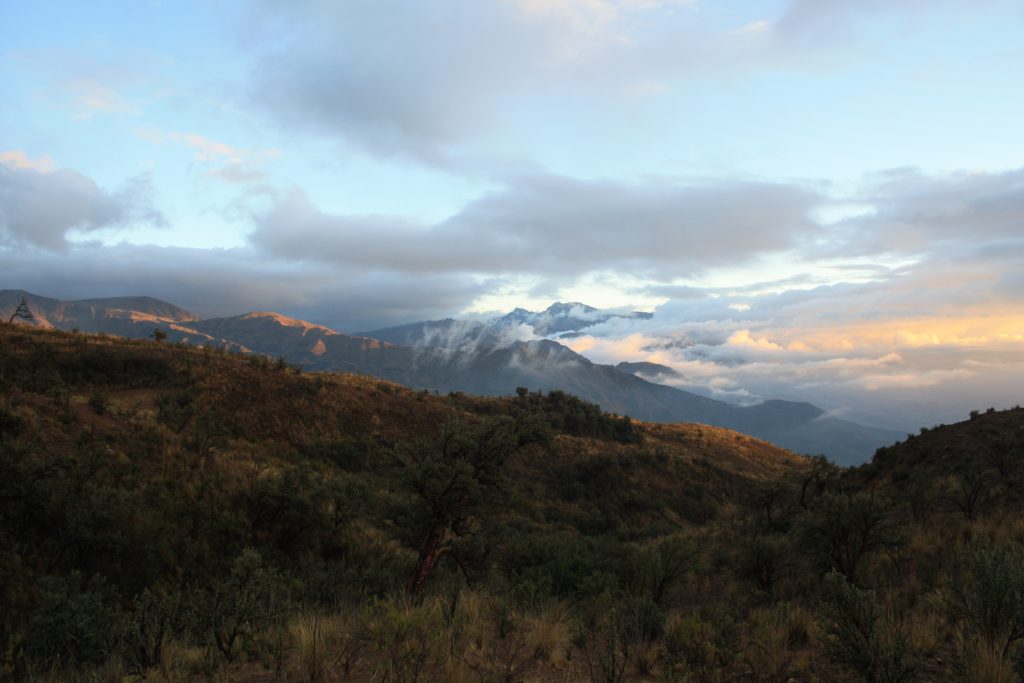
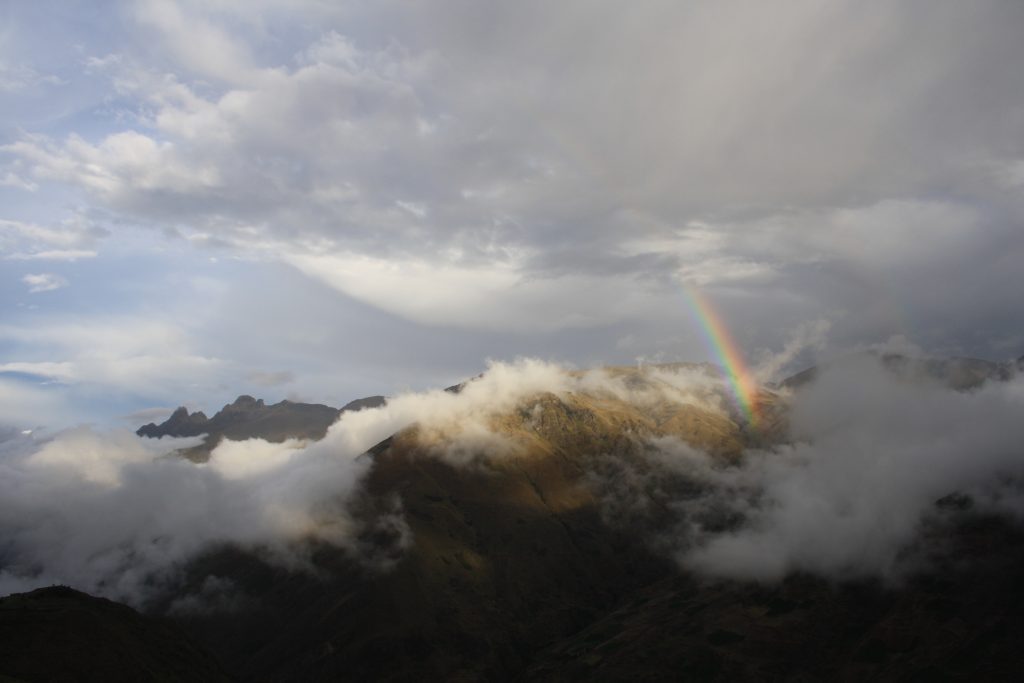
While I was staying in Cochabamba, I met many people who wondered if it was possible to visit the Tunari National Park. From the valley, the Park indeed looks attractive: its steep slopes hugging the city, majestically overlooking it. It is difficult not to wonder what is hidden behind the mountain.
In fact, the Tunari NP is very large: more than 3000 km² expanding from the arid southern slope offering stunning views over the city, to the yungas (humid cloud forests) which cover its three other slopes. Most of the park, located on the plateau, is made of rocks, dry grasslands and small brooks and ponds. It is a beautiful and exotic place, where llamas curiously peer at you from behind the bushes.
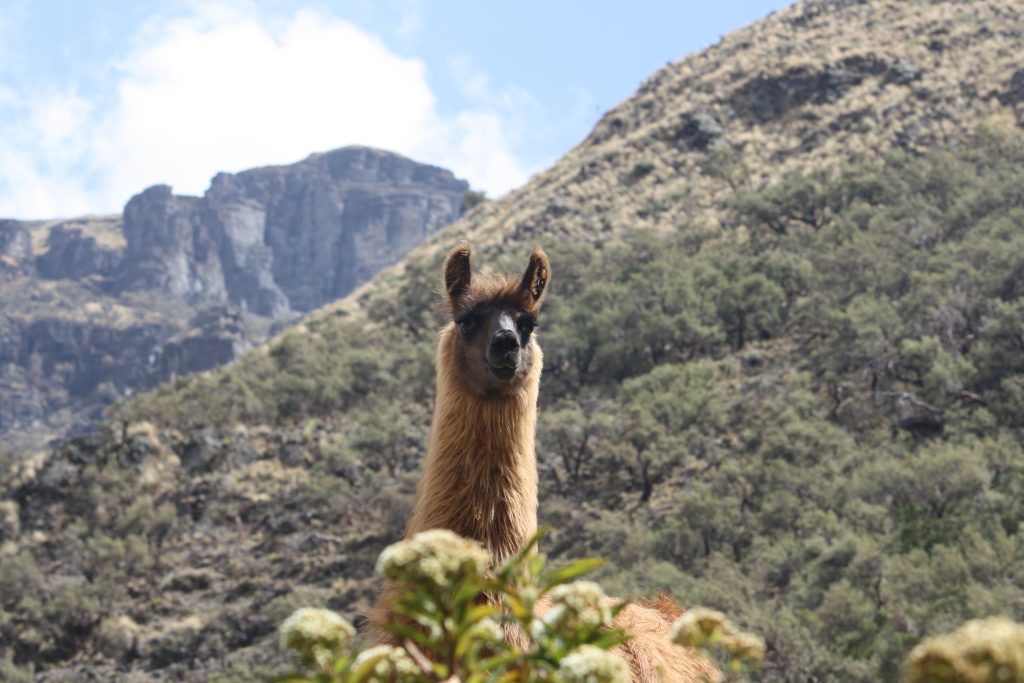
The communities inhabiting the park own the land and permits are required to come into communal land. As strangers/foreigners are usually not welcome, it is not advisable to overnight in the Park by yourself as a tourist. However, if you are persistent, you can find agencies in the city that will take you for example to climb the Cerro Tunari peaking at 5000 meters of altitude. I must point out that there is no certainty you will actually get there as organization can be a little – chaotic, as experienced by a good friend of mine.
The Park is an interesting place for (very) keen birdwatchers: although it holds a few striking species anybody can enjoy and identify such as the Red-Tailed Comet (Sappho sparganura), the Giant Hummingbird (Patagona gigas) or even, if you are lucky, the Yungas Pygmy-Owl (Glaucidium bolivianum, common in some areas), most of the birds are rather difficult to identify. The birds-to-see are undeniably the Cochabamba Mountain-Finch (Comspospiza garleppi), easy to find on the arid southern slope, and the Black-Hooded Sunbeam (Aglaeactis pamela) to be found on the wetter slopes. The experienced birder will also appreciate the sight of a Giant Conebill (Conirostrum binghami), a Rufous-Bellied Mountain Tanager (Pseudosaltator rufiventris), a White-Capped Dipper (Cinclus leucophrys), an Aplomado Falcon (Falco femoralis) or any other Andean specialty. Birding trips are organized by specialized guides, especially in the Polylepis forest patches of San Miguel, which holds a good number of the specific avifauna of the area. If you are interested, the best option would be to contact the Bolivian Bird Conservation Association, Armonía.
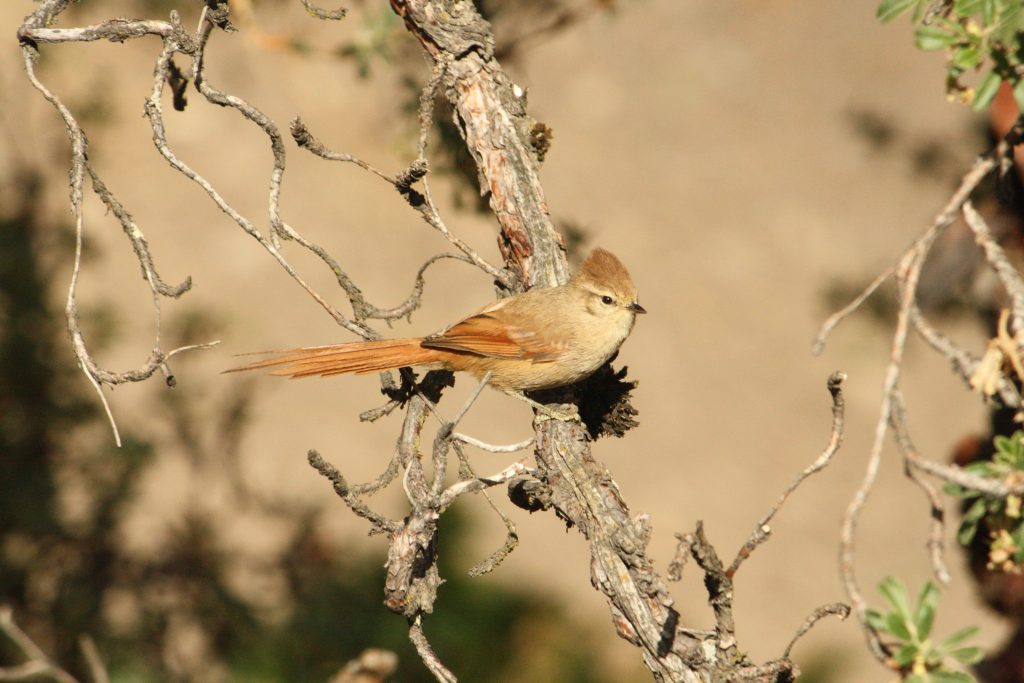
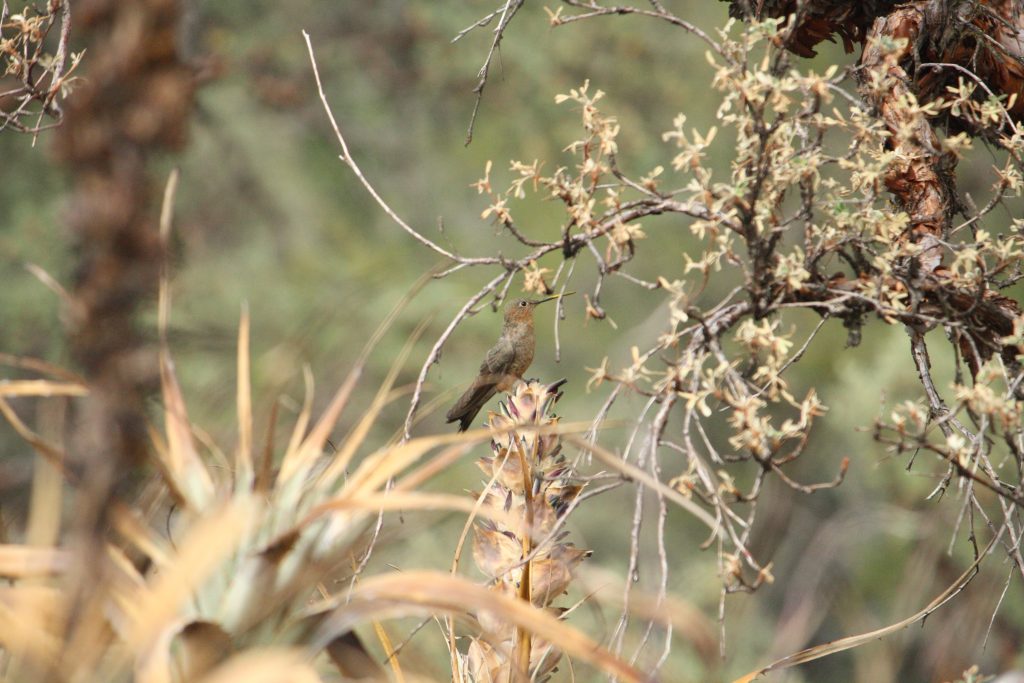
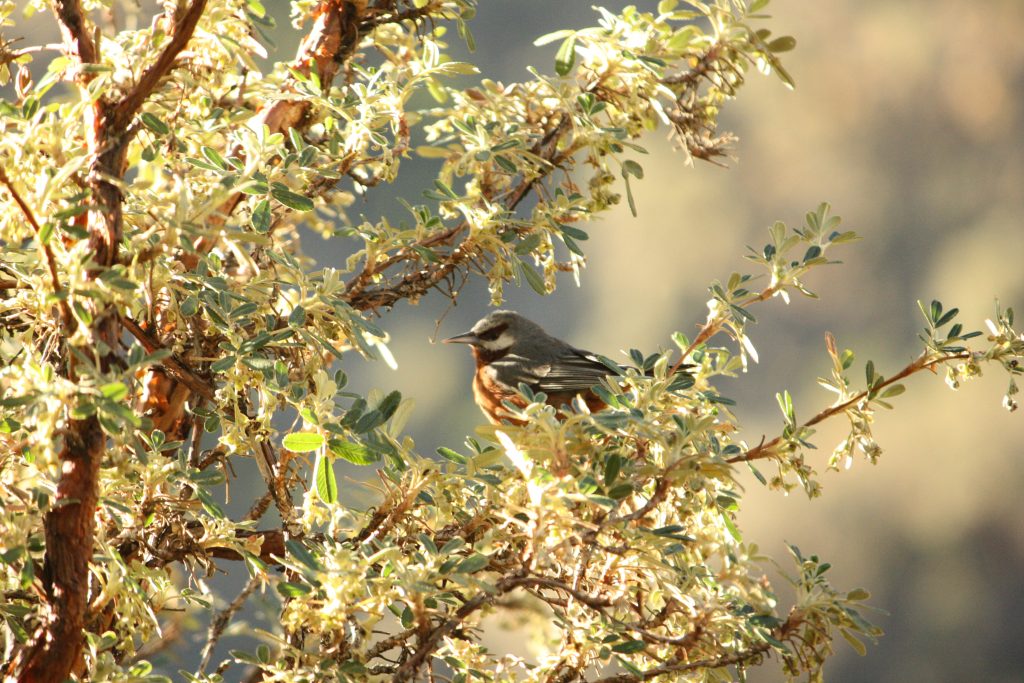
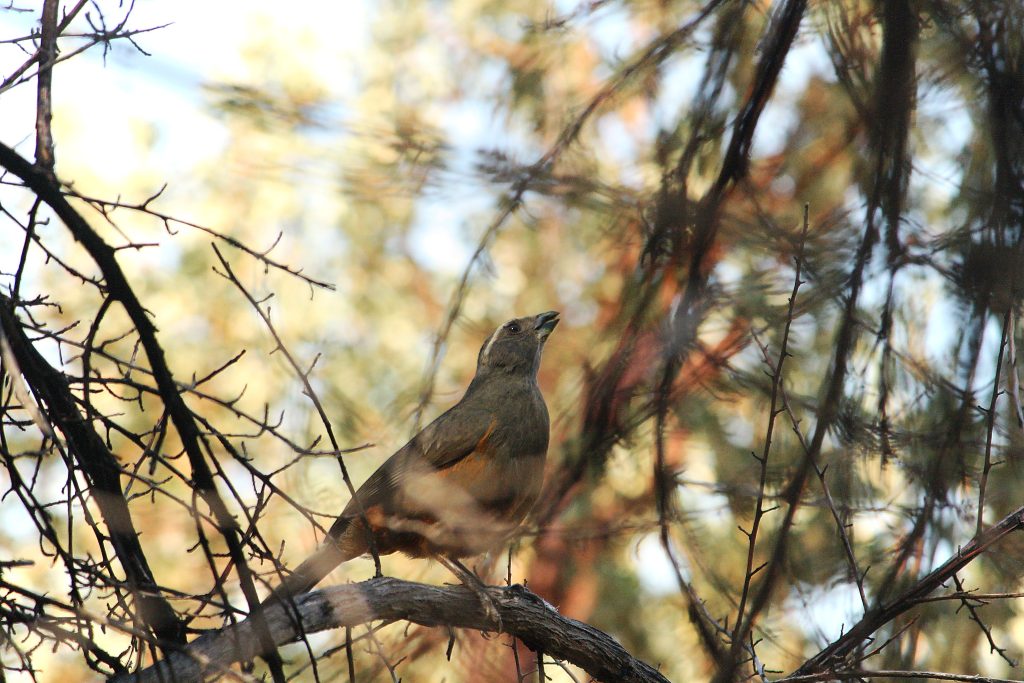
Birds are not the only creatures inhabiting these forested islands: it is not impossible to spot a Montane Guinea Pig (Cavia tschudii) and even a Southern Viscacha (Lagidium viscacia), a rabbit-and-chinchilla-like animal found in South-America. If you are extremely lucky (as I was a few years ago), you might even glimpse a Geoffroy’s Cat (Leopardus geoffroyi). I found myself face-to-face with one of these wild cats once during my fieldwork sessions, and I should never forget how we locked eyes, both surprised at each other’s presence, paralyzed in the middle of the field we happened to cross at the same time. I barely had the time to take one quick shot, and it disappeared from my sight. Because they are heavily hunted, cats are very secretive. Colleagues who have worked for decades in the park never had the luck I had. For the most skilled and lucky wildlife seekers, vicuñas can be found deep in the park and pumas are said to roam the area.
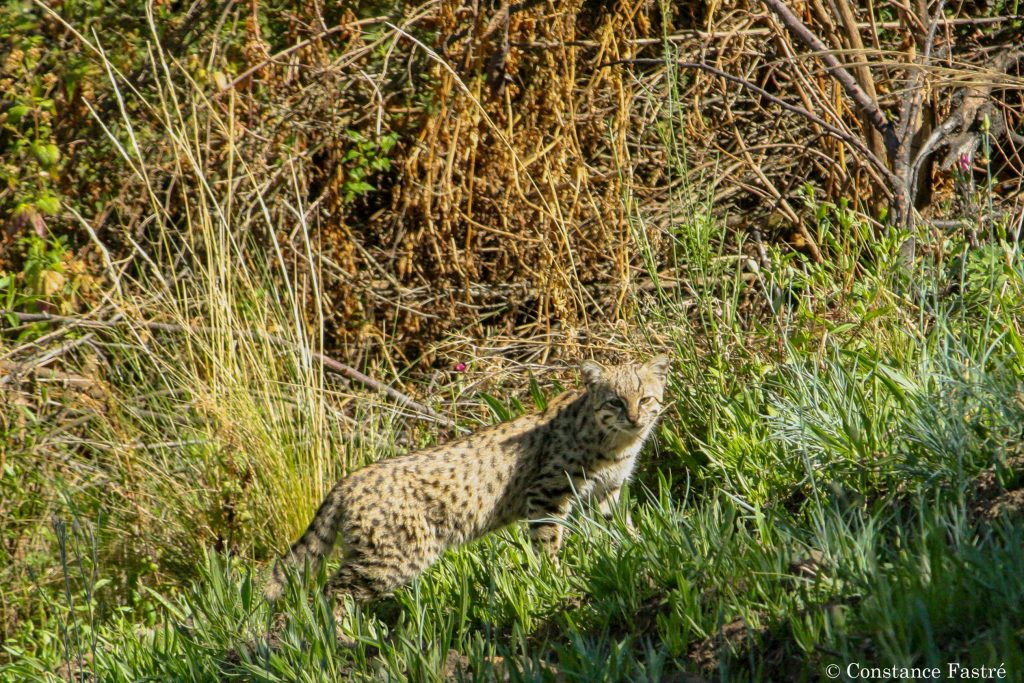
The forest itself is magical. Trees from the Polylepis genus grow where no other can survive: they have evolved to withstand frost, strong winds, intense sun radiation and droughts, making them able to grow in the challenging conditions of the high Andes. Some trees from this family have even been recorded on top of a Bolivian volcano, at 5,200 meters of altitude. Like all forests, Polylepis woodlands also provide so-called ecosystem services, or benefits human freely obtain from a functioning ecosystem. Because they are often located on steep mountain slopes, Polylepis forests are particularly important: they deliver clean water, reduce erosion and water runoff and therefore help preventing landslides and floods from occurring downstream.
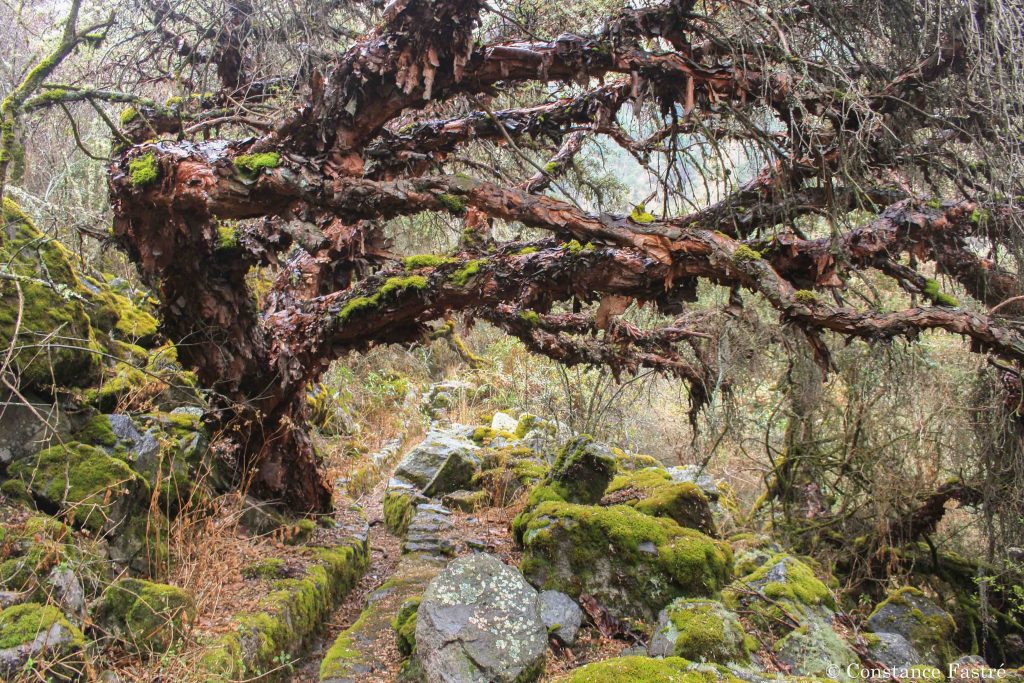
Sadly, the Polylepis forests are disappearing: it’s being replaced by agricultural land or chopped down to provide fire and construction wood to the local communities or even construction land for the expanding population from the city. Nowadays, most of the woodlands are only found as small and scattered forest patches often restricted to remote and inaccessible areas such as ravines. Because the remaining forest acts as a natural buffer protecting the city against droughts, landslides and floods, its protection and exploitation in the Tunari National Park must be carefully balanced to allow biodiversity, local communities and citizens to thrive.
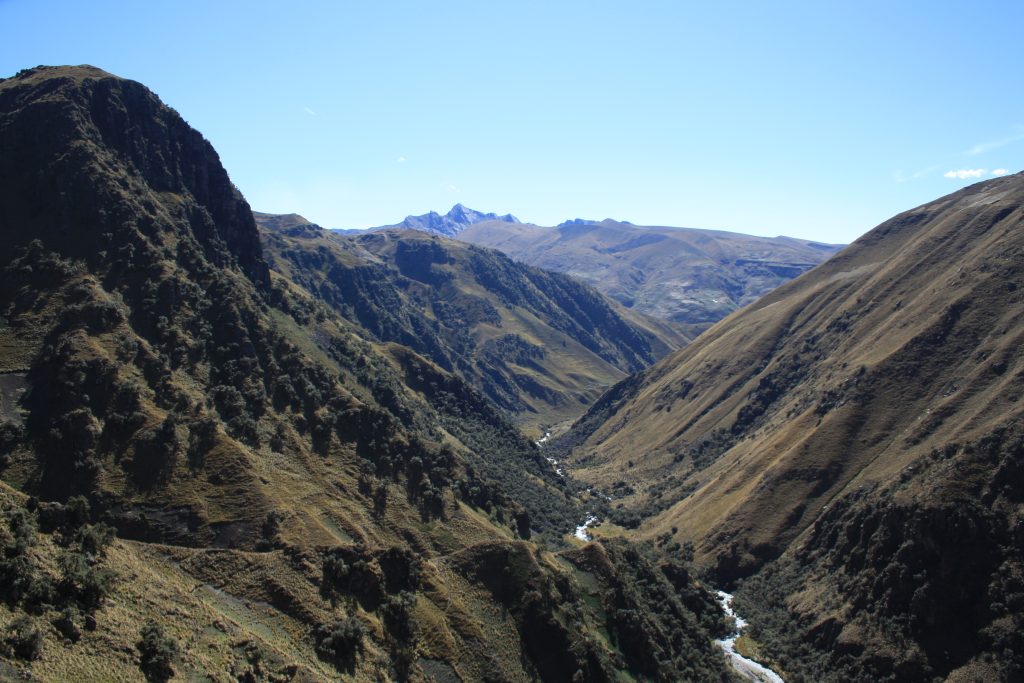
I have spent many hours driving around the Park and walking through its remaining forest patches, counting birds. I met many amazing people living a hard life, spending hours every day walking to and from their fields to their homes. I have sat down in front of my tent dozens of mornings, trying to engrave the stunning sunrises in my memory. I have seen many birds and many trees, and I hope I will help protecting these forests and their inhabitants because it has been there for so long and it would be such a loss for people and nature alike if they should disappear.
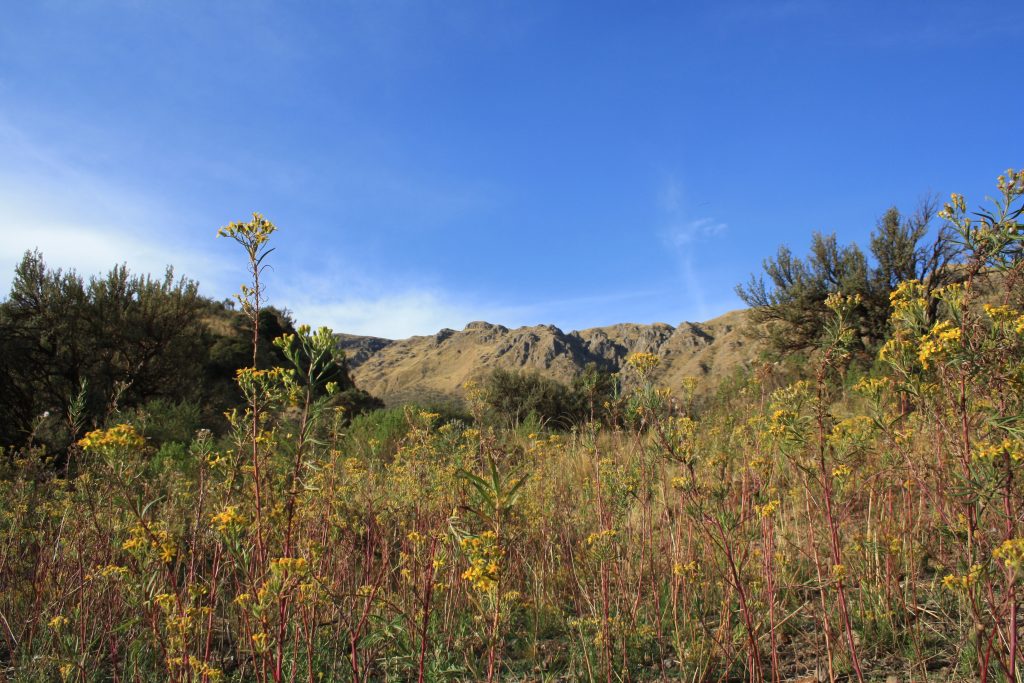
I have spent many hours driving around the Park and walking through its remaining forest patches, counting birds. I met many amazing people living a hard life, spending hours every day walking to and from their fields to their homes. I have sat down in front of my tent dozens of mornings, trying to engrave the stunning sunrises in my memory. I have seen many birds and many trees, and I hope I will help protecting these forests and their inhabitants because it has been there for so long and it would be such a loss for people and nature alike if they should disappear.
WILDLIFE 2/5
Andean birds mainly with some rarer encounters for the luckiest and most persistent
LANDSCAPE 5/5
The park and its landscapes are extremely diverse and very typical
WILDERNESS 3/5
While some places are delightfully remote, most of the park is inhabited and you will rarely be completely alone
OUR VERDICT
A fascinating place to visit while staying in Cochabamba





Hello,
We’ve just read your post with interest. We’re keen to visit this area whilst in cochabamba but we’re struggling to find information about how to access independantly (is this possible?). Tours are either prohibitively expensive or focused on group hikes , we would just like to go birding and unfortunately often find guides to be more hindrance than help (we are ecologists).
Thanks for a great post and any help you are able to give us!
Hi Bryony! I am happy you found this post interesting! If you are in Cochabamba, the closest place to go birding is called San Miguel. It contains a Polylepis forest with some of the nice species (although densities are low, like everywhere else in the Park). As such, it is possible to take a cab from the city to drive up there for the day (better leave very early and haggle the price). There is a ‘birding trail’ from the village but it may be easier to go with a local, if only to be able to talk to the people from the community! I may be able to give you the name of some people in Cochabamba if you need more information on birding in the area! In any case, feel free to email us and I will transfer their details to you!
Thank you for this, we’re heading up there tommorow and we’re going to stay for the night near San Miguel to get an early start the next day!
Wonderful! I hope you have a great time and see many Andean birds! Let us know about how it went if you have some time!
Hello!! I will be visiting Cochabamba at the end of this month and I am looking to visit the forest of San Miguel specifically to photograph birds. Do you recommend having a local birding guide or is the forest pretty easy to navigate on your own? Typically with photography it is much easier to be on my own so I am wondering how doable that is. Also, is it easy to get a taxi from San Miguel back to Cochabamba? Thank you!!
Hi Sean.
In my experience, it is easy to take a taxi from the city to San Miguel (it would take a big hour to get there though). The forest is relatively easy to navigate on your own, especially because it is not so big, but I would advise you to go with a local. This can spare you troubles with local communities, especially if you do not speak Spanish…